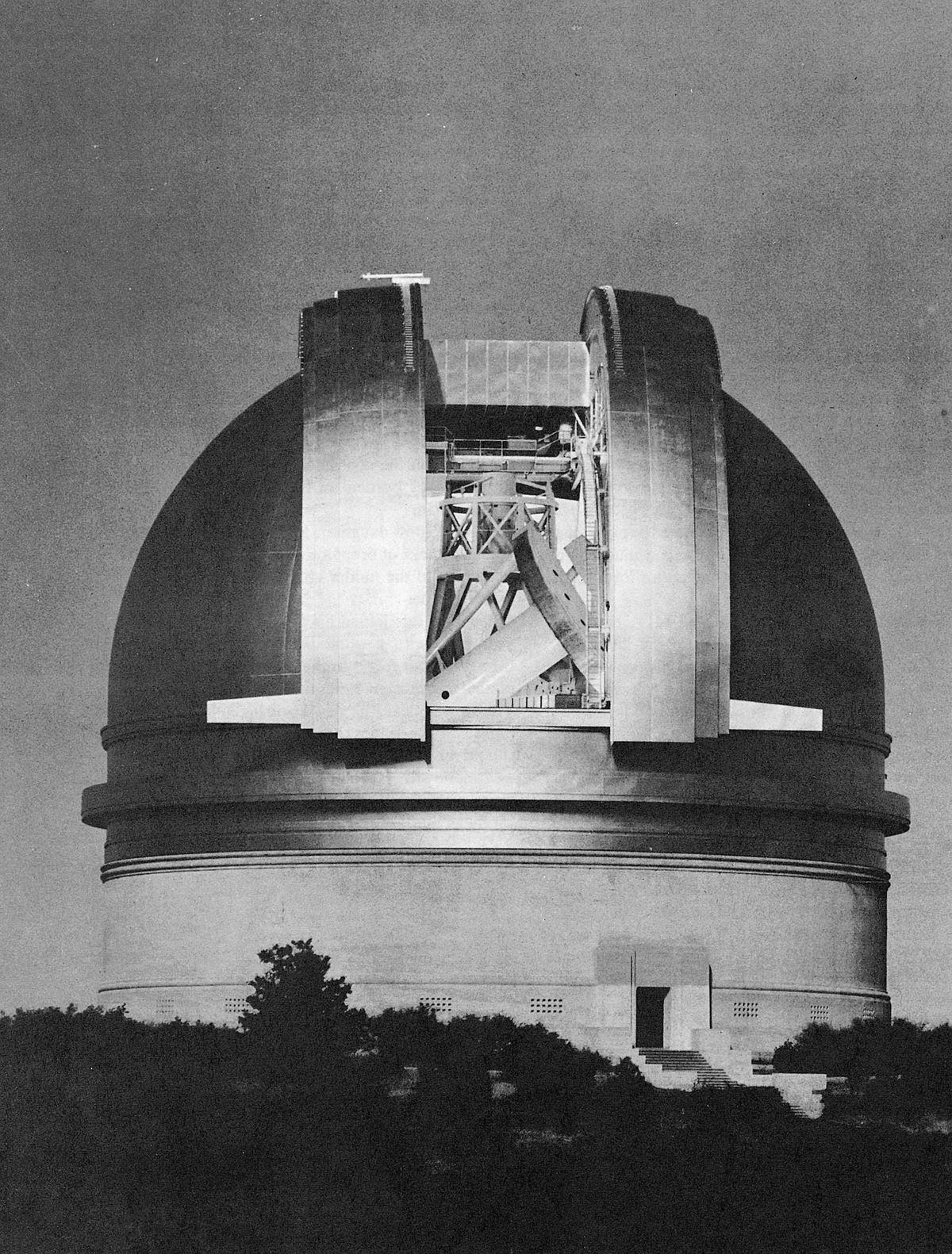
200 inch Hale telescope at Palomar Observatory shown at night Built 1948 and named for George Ellery … [+]
Universal Images Group via Getty Images
For those unfamiliar with how George Ellery Hale’s 200-inch Big Eye Telescope at Palomar observatory forever changed astronomy, Linda Schweizer’s recent book will be a revelation.
Hale’s early 20th-century designs for a mountaintop observatory in Southern California’s Peninsular Ranges had by 1948 morphed into one of the world’s greatest scientific instruments. And the observatory remains an astronomical workhorse even today.
“The casting of the Big Eye’s 200-inch-diameter Pyrex mirror, the construction of its massive dome and horseshoe mount, and its first images of the universe generated as much public excitement as would the Apollo moon missions and the Hubble Space Telescope decades later,” Schweizer writes in “Cosmic Odyssey: How Intrepid Astronomers at Palomar Observatory Changed Our View of the Universe.”
Constructed with funds provided by The Rockefeller Foundation and dedicated as the 200-inch Hale Telescope on June 3, 1948, she notes that its big eye “encountered quasars and supermassive black holes, understood the chemistry that turns stardust into life.” And it was all due to the foresight of Hale, one very ambitious young astrophysicist from Chicago.
By the time he designed Palomar, Hale had already “masterminded the design and construction of four consecutive world’s largest telescopes, all dedicated between 1897 and 1948,” writes Schweizer. But the Palomar project took three times longer to complete than initially envisaged and suffering from complete mental exhaustion, in 1936 Hale became too ill to lead the project. He died two years later, a full decade before the Hale telescope’s dedication.
In twelve succinct chapters, Schweizer offers a very readable and understandable summary of our astronomical progress over the last 75 years as primarily seen through the lens of this one optical observatory. It’s not an easy task to offer up such an historical survey to the general public, but Schweizer does it with aplomb.

Cosmic Odyssey
MIT Press
As Schweizer notes, the observatory’s 48-inch Schmidt telescope spent its first seven years photographing 900 square fields surveying “hundreds of millions of never-before seen objects showed up, such as individual and clustered stars and galaxies, nebulae, comets, and asteroids,” mapping three-quarters of the entire sky. This type of survey technique paved the way for the hale telescope to hone-in on these objects and make some of the 20th century’s most significant discoveries.
It’s obvious that Schweizer has a Ph.D. in astronomy because she seems completely at ease in describing the theories she documents in this compelling volume.
Here are a few of Palomar’s most significant breakthroughs.
—- The cosmos is expanding away from us in all directions.
Astronomer Edwin Hubble usually gets credit for confirmation that our cosmos is in fact expanding. He proved that there’s a direct relationship between the recessional speeds of distant galaxies and their distances from Earth.
But in the late 1950s, Allan Sandage —- one of Hubble’s proteges, used observations with the Palomar Hale Telescope to note that the universe is expanding away from us in isotropic fashion, or equally in all directions, which set the stage for contemporary cosmology.
—- Confirmation of stellar nucleosynthesis (the generation of elements via nuclear processes).
Elements such as carbon, nitrogen, oxygen, silicon, up to and including iron are created during the brief lives of massive stars, the author notes which she writes is crucial to enrichment of the interstellar medium and the formation of second and third generation stars like our own Sun. By the late 1950s, observations at Palomar were revolutionizing our understanding of how heavy elements are formed. In a 1957 Reviews of Modern Physics paper, “Synthesis of the Elements in Stars,” the authors proposed a sweeping theory of nucleosynthesis within dense, hot stellar interiors.
—- The discovery that our Milky Way galaxy formed from a collapsing proto-galactic cloud of dust and gas.
Sandage, along with astronomers Olin Eggen and Donald Lynden-Bell, used data taken from observations at Palomar in their classic paper that first described how an ancient gas cloud collapsed into our current Milky Way Galaxy. The authors described how a cloud some ten times the diameter of our current galaxy collapsed some 10 billion years ago, or 3.7 billion years after the Big Bang to form in a monolithic collapse. The 1962 paper, published in The Astrophysical Journal, opened the door to decades of galactic models describing similar processes throughout the cosmos.
—- A new method of looking for supernovae.
Swiss American astronomer Fritz Zwicky spent thousands of nights obtaining deep sky images with the observatory’s 18-inch Schmidt camera, the first functioning telescope at Palomar.
His work was looking for supernovae which at the time were very poorly understood, however, Schweizer writes that he concentrated on finding exploding stars outside our own galaxy by focusing on clusters of galaxies, instead of just one individual galaxy.
Zwicky superposed the current night’s photographic exposures on the previous night’s image of the same part of the sky. Schweizer notes that surveys using such methodology was completely novel at the time. But the author writes that it “inaugurated a tradition of periodically surveying sky for supernovae with Schmidt cameras which continues to this day.”
The hardcover edition of “Cosmic Odyssey” offers explanatory sidebars and high-quality vintage black and white and color historical photos of the observatory’s astronomers as well as the observatory’s telescopes. And the author also does a fine job in referencing external analysis and observations that augmented Palomar’s initial observations.
However, there are a couple of caveats. Don’t expect a narrative style in the vein of creative non-fiction. The book is filled with factual, workman-like prose and by its very nature covers so much material in such a condensed form that readers used to more leisurely in-depth narratives may find it frustrating.
Yet as an up-to-date reference for this historic observatory’s many contributions, “Cosmic Odyssey” is invaluable.
This article is auto-generated by Algorithm Source: www.forbes.com


